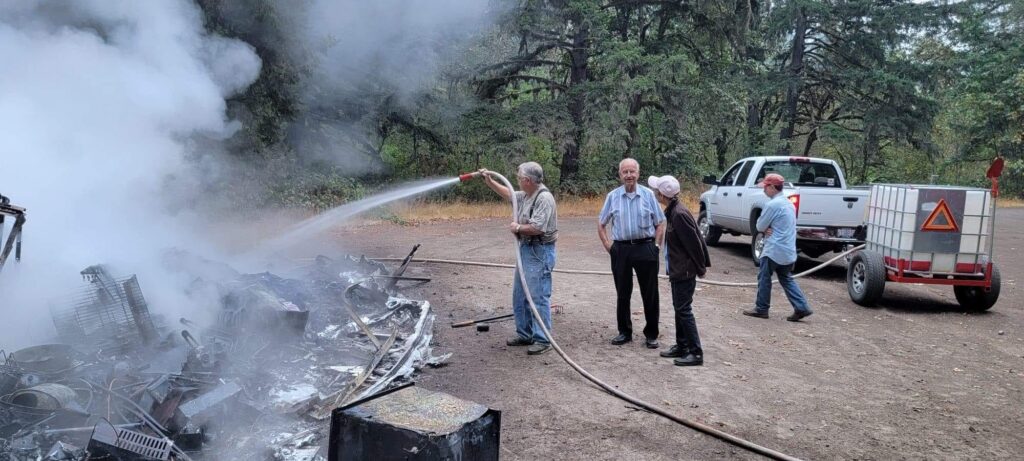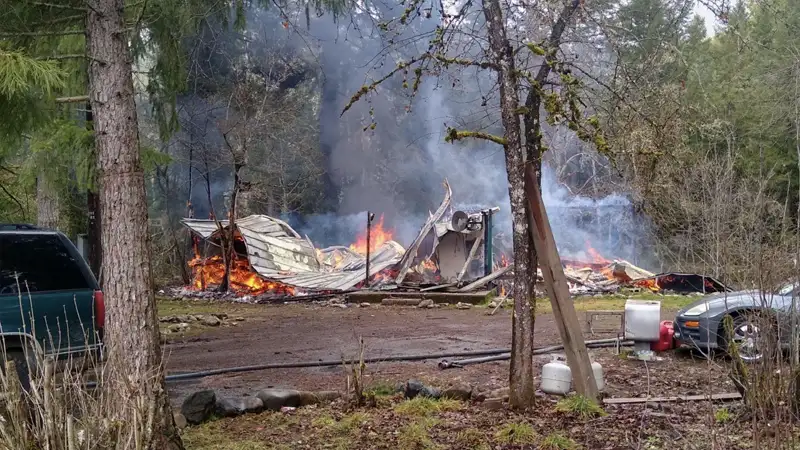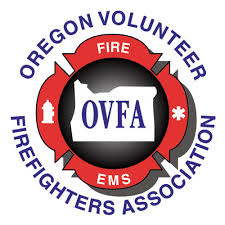Team Commissions Center for Non-Profit Law for 501c3 Creation
January, 2022 Chimney Fire ends in total loss of a family home.
January 2022 – November 2022 Mile Marker 18: Disston, Oregon (Lane County): A rural family experienced a simple chimney fire. 911 was called. No fire trucks came. The home was a total loss. Because of this event, concerned neighbors formed the Row River Exploratory Committee with the primary goal to include the local community fire effort into the Lane County”s 911 Emergency Call Service.
It became clear that a loosely-tied community group could not join the the 911 Emergency System. Meanwhile more fires hit the community. Still our community members came to the rescue, putting out fires themselves.

September 22, 2022: Community Fire Brigade putting out a trailer fire with flames reaching over 30-feet high.
September 22, 2022, during the time that all local fire stations were fighting the Cedar Creek Fire, our community experienced a trailer fire. Our trusted community members put out this fire. However, had they not been able to put out the fire, much of our community could have been lost.
Three months after this event, and over much research and deliberation, the Row River Exploratory Committee decided to move forward to create the Row River Fire Response 501(c)(3).
Once we determined that this was the right direction to most benefit our community, the RRFR commissioned the Center for Non-Profit law to help confirm if a 501(c)(3) was the right direction, and, once that was decided, to process the 501(c)(3) with the state of Oregon and the United States Federal government.
The Benefits of becoming a 501(c)(3) is as follows:
- Qualified as a public charity under Internal Revenue Code 501(c)(3) makes the RRFR eligible for federal exemption from payment of corporate income tax.
- As many foundations and government agencies limit their grants to public charities, we become eligible for public and private grants to move forward to meeting the mission we set forth as an organization.
- Establishes a formal structure to place the nonprofit’s mission and structure above the personal interests of individuals associated with it.
- A.) Offers liability protection for the founders, directors, members, and employees are not personally liable for the nonprofit’s debts.
- B.) Requires directors to have a fiduciary responsibility; if they do not perform their jobs in the nonprofit’s best interests, and the nonprofit is harmed, they can be held liable.
Through the Center for No-Profit law, the board is responsible to complete education and training in their capacity of a board, and to abide bylaws that area legally structured into the 501(c)(3).

